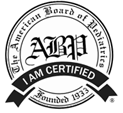 Yes, to a degree. Separation anxiety is a normal stage of emotional development that starts when babies begin to understand that things and people exist even when they’re not present – a concept called object permanence. This starts to occur as early as 5-6 months of age, usually peaks between 10-18 months, and eases by age 2. This is the time they perceive relationships between objects and people, including distance! Your little one may feel that he/she has no control over the distance between himself and you, and that can make him/her feel helpless and anxious. At certain stages, most babies or toddlers will show true anxiety and become upset at the prospect – or reality – of being separated from a parent. If you think about separation anxiety in evolutionary terms, it makes sense: A defenseless baby would naturally get upset over being taken away from the person who protects and cares for him. In many ways, attitudes about babies and separations are cultural. Western countries tend to stress autonomy from a very early age. But in many other cultures, infants are rarely separated from their mother in the first year of life. Regardless of the origins of this developmental stage, it’s frustrating for both babies and parents. The good news is that separation anxiety will pass – and you can take steps to make it more manageable. In the meantime, try to appreciate the sweetness of knowing that to your child, you’re number one.
Yes, to a degree. Separation anxiety is a normal stage of emotional development that starts when babies begin to understand that things and people exist even when they’re not present – a concept called object permanence. This starts to occur as early as 5-6 months of age, usually peaks between 10-18 months, and eases by age 2. This is the time they perceive relationships between objects and people, including distance! Your little one may feel that he/she has no control over the distance between himself and you, and that can make him/her feel helpless and anxious. At certain stages, most babies or toddlers will show true anxiety and become upset at the prospect – or reality – of being separated from a parent. If you think about separation anxiety in evolutionary terms, it makes sense: A defenseless baby would naturally get upset over being taken away from the person who protects and cares for him. In many ways, attitudes about babies and separations are cultural. Western countries tend to stress autonomy from a very early age. But in many other cultures, infants are rarely separated from their mother in the first year of life. Regardless of the origins of this developmental stage, it’s frustrating for both babies and parents. The good news is that separation anxiety will pass – and you can take steps to make it more manageable. In the meantime, try to appreciate the sweetness of knowing that to your child, you’re number one.
There are several things you can do to help your baby through separation anxiety:
- Arrange childcare with people familiar to your baby. If you have to leave your baby – when you return to work, for example – try leaving him with people he already knows, like his father, grandmother, or aunt. Your baby may still protest, but he might adjust to your absence more easily when surrounded by well-known faces.
- Let your baby get to know a new caregiver first. If you need to leave your child with someone he doesn’t know, give him a chance to get to know his caregiver while you’re still around. This allows your baby to get comfortable and acquainted with the new caregiver.
- Make it routine. Decide on a short-and-sweet ritual and stick to it every time you say goodbye. A predictable routine helps your child build trust in you and in his own ability to get through the separation.
- Always say goodbye. Kiss and hug your baby when you leave. Tell her where you’re going and when you’ll be back, but don’t prolong your goodbyes. Resist the urge to sneak out the back door. Your baby will only become more upset if she thinks you disappeared into thin air.
- Keep it light. Your baby is tuned in to how you feel, so show warmth and enthusiasm for the caregiver you’ve chosen. Try not to cry or act upset if your baby starts crying – at least not while she can see you. You’ll both get through this. The caregiver will probably tell you later that your baby’s tears stopped even before you were out of the driveway.
- Once you leave, leave. Repeated trips back into the house or daycare center to check on your baby only make it harder on you, your child, and the caregiver.
- Try a trial at first. Limit the first night or afternoon out to no more than an hour. As you and your baby become more familiar with the sitter or the childcare setting, you can extend your outings.
Separation anxiety can be hard on parents too, especially if their baby gets hysterical when they leave or seems to prefer one parent over the other. You might feel guilty about leaving your baby with someone else and worry about him while you’re apart. If your baby wants your attention all the time, you may feel exhausted, frazzled, or even resentful.
It’s okay to have these emotions. Just keep reminding yourself that separation anxiety is normal and temporary: Your child is learning to trust you and is developing important skills on his way to independence. Although you may be feeling overwhelmed, keep in mind that separation anxiety is a sign of a healthy attachment.
Sarah Caudle, PA-C



